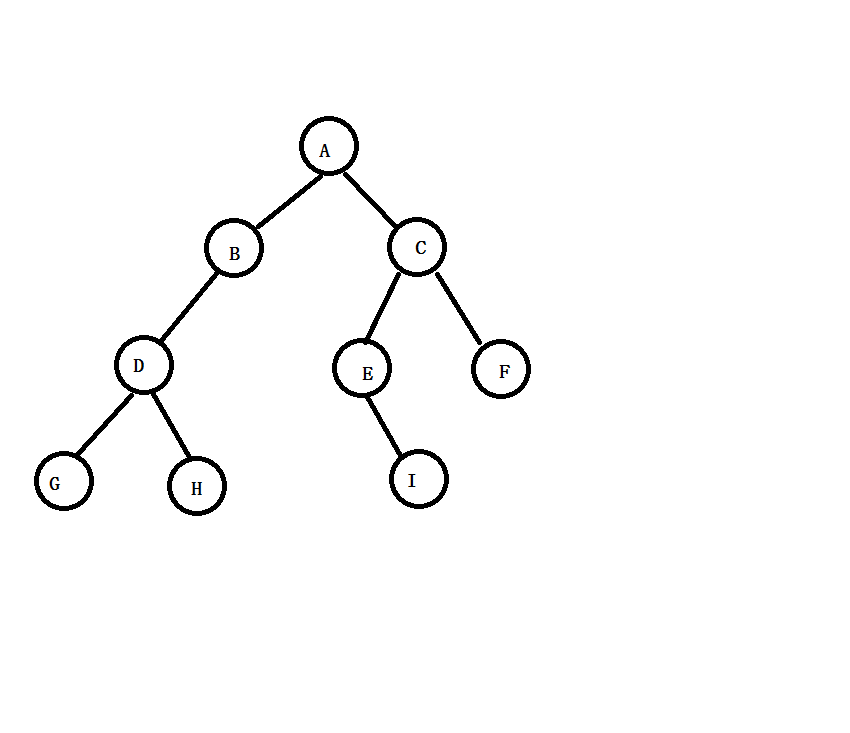二叉树这个东西哇看着真是无语…尤其是自学的,..,,.简直想哭啊有木有!!!Java的资料太少,书上都是C或者C++,自己转java,心好累~~
二叉树常用构建方式
参考资料大致有两种方式,
- 顺序输入
- 前序遍历方式输入
下面上代码:
- 结点类
public class BiNode<T> {
private T data;
private BiNode<T>lChild;
private BiNode<T> rChild;
BiNode( T Data){
this.data=Data;
}
public T getData() {
return data;
}
public void setData(T data) {
this.data = data;
}
public BiNode<T> getlChild() {
return lChild;
}
public void setlChild(BiNode<T> lChild) {
this.lChild = lChild;
}
public BiNode<T> getrChild() {
return rChild;
}
public void setrChild(BiNode<T> rChild) {
this.rChild = rChild;
}
}- 顺序遍历代码(数组存储,线性)
大致思路是顺序输入一串元素,根据儿叉树的关系进行转换(完全二叉树使用,非完全浪费空间太多)
private List<BiNode<T>> nodeList =null;
public List<BiNode<T>> CreateBiTree(T[] t){
nodeList = new LinkedList<BiNode<T>>();
//把数组t中的元素转换成二叉树的结点
for(int i=0;i<t.length;i++){
BiNode<T> bNode = new BiNode<T>(t[i]);
nodeList.add(bNode);
}
//对于数组中的父节点,最后一个父节点(t.length/2-1)可能没有右节点
//故要分情况讨论(1.最后一个父节点前情况,2.最后一个父节点的情况)
for(int i=0;i<t.length/2-1;i++){
//左孩子为2i+1,右孩子为2i+2....顺序读
nodeList.get(i).setlChild(nodeList.get(2*i+1));
nodeList.get(i).setrChild(nodeList.get(2*i+2));
}
int lastParentIndex = t.length/2-1;
nodeList.get(lastParentIndex).setlChild(nodeList.get(lastParentIndex*2+1));
//如果数组的长度为奇数才建立右孩子
if(t.length%2==1){
nodeList.get(lastParentIndex).setrChild(nodeList.get(lastParentIndex*2+2));
}
return nodeList;
}- 前序遍历方式输入
public String[] str;
int count=0;
private BiNode<Integer> root;
public BiNode<Integer> getRoot() {
return root;
}
public void setRoot(BiNode<Integer> root) {
this.root = root;
}
public BiNode<T> CreateBiTree(){
BiNode<T> bNode =null;
if(count >= str.length || str[count++].equals("#")){
bNode = null;
}
else{
bNode = new BiNode<T>((T)str[count-1]);
bNode.setlChild(CreateBiTree());
bNode.setrChild(CreateBiTree());
}
return bNode;
}- 遍历
/*前序*/
public static void preOederTraverse(BiNode<Integer> root) {
if (root != null) {
System.out.print(root.getData() + " ");
preOederTraverse(root.getlChild());
preOederTraverse(root.getrChild());
}
}
/*中序*/
public static void inOrderTraverse(BiNode<Integer> root) {
if (root != null) {
inOrderTraverse(root.getlChild());
System.out.print(root.getData() + " ");
inOrderTraverse(root.getrChild());
}
}
/*后序*/
public static void postOrderTraverse(BiNode<Integer> root) {
if (root != null) {
postOrderTraverse(root.getlChild());
postOrderTraverse(root.getrChild());
System.out.print(root.getData() + " ");
}
}- 测试
测试用前序输入进行测试
public static void main(String[] args) {
Scanner cin = new Scanner(System.in);
while (cin.hasNext()) {
String s = cin.nextLine();
String[] str = s.split(",");
BiTreeClass<Integer> tree = new BiTreeClass<Integer>();
tree.str=str;
BiNode<Integer> root = tree.CreateBiTree();
preOederTraverse(root);
System.out.println();
inOrderTraverse(root);
System.out.println();
postOrderTraverse(root);
}
}- 结果
输入:A,B,D,G,#,#,H,#,#,#,C,E,#,T,#,#,F,#,#
输出:
A B D G H C E T F (前序)
G D H B A E T C F (中序)
G H D B T E F C A (后序)























 1114
1114

 被折叠的 条评论
为什么被折叠?
被折叠的 条评论
为什么被折叠?








